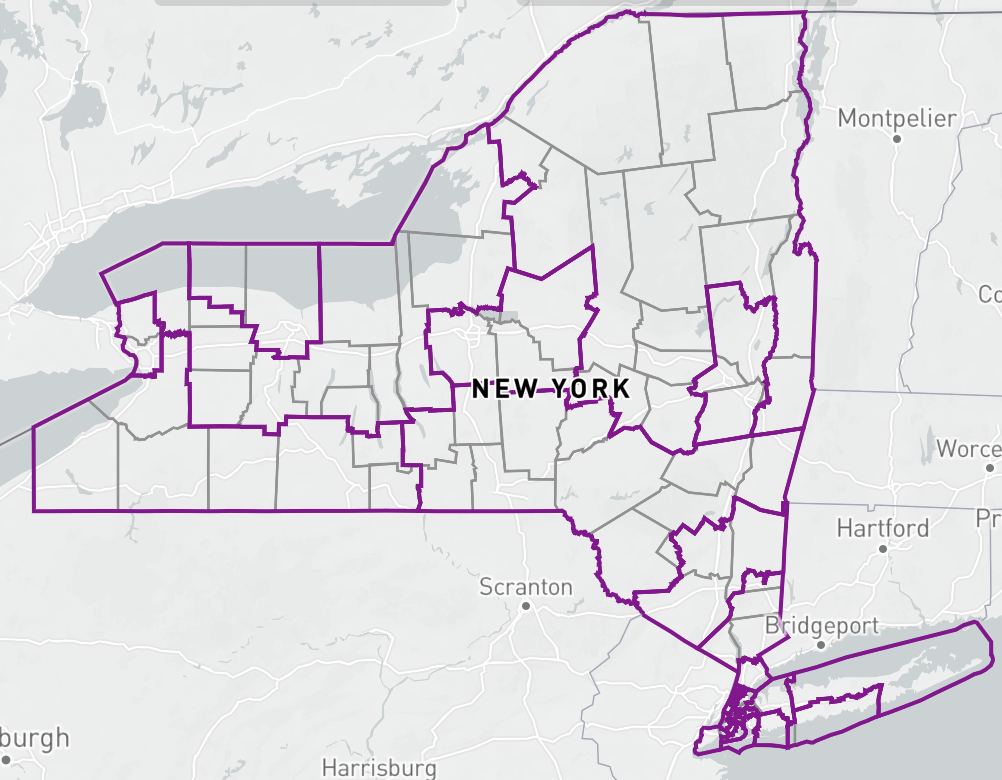Top court grants partial stay in redistricting case
/The New York State Court of Appeals granted a partial stay in an ongoing congressional redistricting case, allowing unofficial preparation work by the New York Independent Redistricting Commission to begin. Photo by UpstateNYer via Wikimedia Commons
By Ryan Schwach
After a lower appellate court ordered state congressional district lines to be redrawn, the state’s highest court has ordered a stay until they make their own ruling.
The motion to vacate the stay brought by a group of Democrats was denied on Tuesday by the New York State Court of Appeals, which means the New York State Independent Redistricting Commission will need to sit on their hands and not begin any redrawing process until the court makes its final decision later this year.
The Court of Appeals will hear the first arguments in the case on Nov. 15.
The stay, however, does not completely block the IRC from doing anything – they can prepare to redraw the state’s congressional district lines, just as they did last year, according to redistricting expert Jefferey Wice of the New York Law School.
“There was a stay, but they also permitted the commission to continue work,” Wice told the Eagle. “It was kind of a Solomonic divide, the only thing the commission can't do is to have formal meetings and votes, but it did not preclude [them] from doing any preparatory work to develop a map.”
“It is possible that they'll hold either hearings or listening sessions where they might solicit public comment on what a new map should look like,” he added. “They could also draft new maps for consideration.”
However, the Republican delegation has already stated that they would not be returning to any redistricting work until the court rules.
The ruling comes after there was some debate as to if a stay was automatic when the Republican-led plaintiffs in the case appealed the lower court’s decision in July.
In that case, the Appellate Division, Third Department ruled 3-2 in favor of an argument, which has been publicly supported by the governor and attorney general, that said that the congressional district lines drawn by a special court-appointed master were unconstitutional – the special master was originally appointed only after the Court of Appeals ruled that previous maps drawn by the state legislature were also unconstitutional.
Political observers argue that the lines being litigated heavily contributed to the GOP’s current control over the House of Representatives, after several Democratic seats in New York were flipped after the districts had been redrawn last year.
At the time of the appeal in July, Wice interpreted the decision as not coming with an automatic stay, while John Faso, a former Republican Congressman from Long Island who is a consultant for the GOP side of the case, argued that there was.
The Court of Appeals will hear arguments in a congressional redistricting case in mid-November. Map via New York State Redistricting & You/CUNY Graduate Center
This ruling effectively confirms that there was, with the stipulation that some unofficial work can be done before the state’s top court takes up the case in two months.
As to why the court chose to make the middle-of-the-road decision, Wice said he can only speculate.
“It might have been a way to get all seven justices on the same page,” he said. “It is an internal question to the court to figure out internally, but that was the decision they made without explanation.”
Wice says it is also hard to glean any sort of prediction on how the court will ultimately rule, partially because this decision – as well as others – will be among the first led by Chief Judge Rowan Wilson, who is among the court’s most liberal justices.
“It's hard to try to figure out what's going on behind the scenes, we really haven't seen any decisions by the Wilson court yet,” said Wice.
In 2022, Wilson wrote the dissenting opinion in the initial litigation against the legislature-drawn district lines, and argued that he believed the legislature's drawing of the maps after the IRC had failed to submit a final version was constitutional.
Judges Shirley Troutman and Jenny Rivera also dissented from the majority opinion, supported by former Chief Judge Janet DiFiore and current Judges Madeline Singas, Michael Garcia and Anthony Cannataro.
Should each of the judges rule the same way they did in the original case, newly appointed Judge Caitlin Halagan, who has yet to rule on a redistricting case, will serve as the tie breaker.
Tuesday’s decision to grant the stay gives both Republicans and Democrats what they want until the court rules, Wice said.
“It enables Republicans to maintain that no new map is needed right now, but it allows the Democrats to proceed to draw a new map and it gets the court off the hook because if the court upholds the appellate court ruling that a new map is needed, then the commission can't claim later that is that there isn't enough time left because the court is giving them the time to undertake mapping, meetings, outreach and other tasks throughout the September through November period,” Wice said.
Even with the court allowing the Democrats to do some work before the ruling, it will be a while until New Yorkers get to see any kind of maps.
The court will likely issue a ruling several weeks after hearing the case in November, and the commission is unlikely to get back to work – if the court orders it to – until after the start of the new year.





